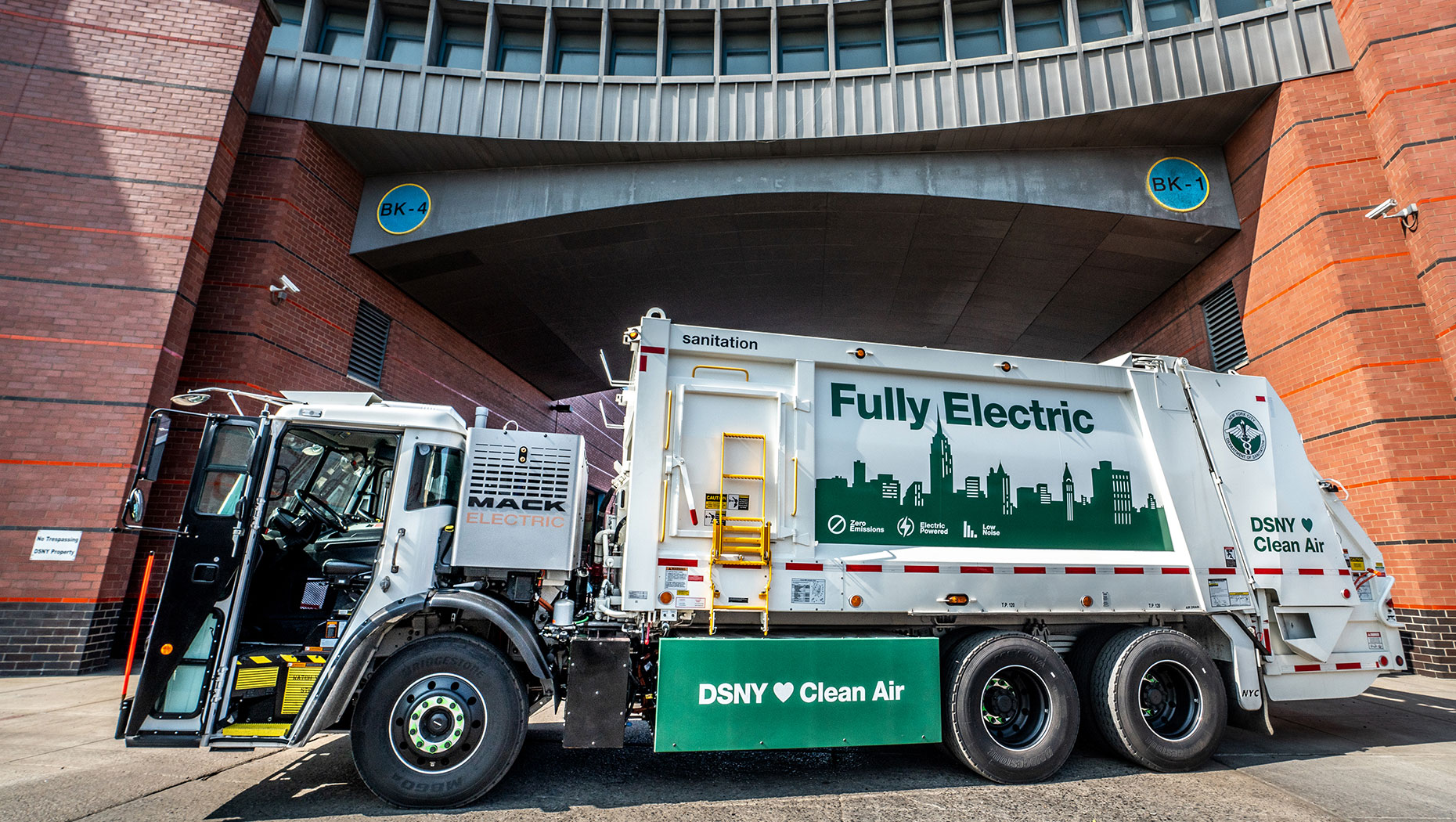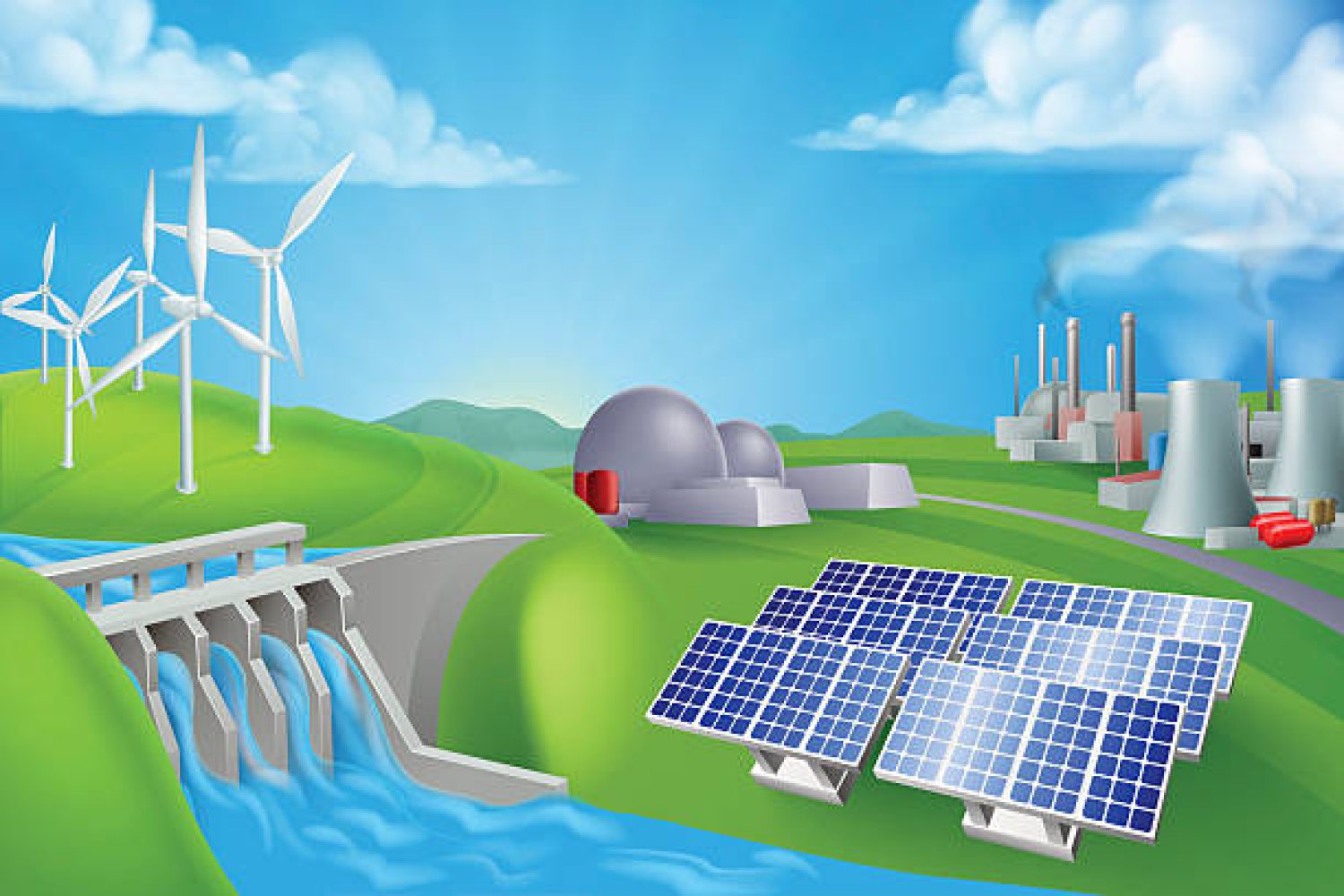Volvo Launches PU2000 Energy Storage System to Boost Electrification – Yahoo Finance

Volvo Group’s Strategic Entry into Energy Storage and its Contribution to Sustainable Development Goals
Introduction
Volvo Group has announced its expansion from the transport sector into energy infrastructure with the official introduction of the PU2000 Battery Energy Storage System (BESS). This strategic initiative, managed by the Volvo Energy division, is designed to support industrial and commercial customers in the global energy transition, directly aligning with several United Nations Sustainable Development Goals (SDGs).
PU2000 System Overview and Features
The PU2000 is an advanced BESS engineered in Sweden to provide sustainable and resilient energy solutions. The system is designed to accelerate electrification and help customers overcome grid constraints, thereby contributing to a lower-emission economy.
Core Objectives
- Optimization of energy costs for commercial and industrial users.
- Enhancement of operational resilience through stable power supply.
- Acceleration of electrification by providing necessary energy infrastructure.
Key System Features
- Seamless Integration: The PU2000 integrates with the Volvo Site Controller and Volvo Cloud Energy Management System, enabling advanced site energy management and real-time performance monitoring.
- Safety and Reliability: The system incorporates high safety standards, including liquid cooling, PFAS-free fire suppression, advanced cybersecurity, and adherence to Volvo’s robust supply chain protocols.
- Operational Flexibility: It supports a wide range of applications critical for modern energy management, such as peak shaving, load shifting, participation in grid markets, support for electric vehicle (EV) charging, and island-mode operation for off-grid resilience.
Alignment with Sustainable Development Goals (SDGs)
The launch of the PU2000 BESS demonstrates a significant commitment to advancing global sustainability targets. The system’s functionality directly supports the following SDGs:
- SDG 7: Affordable and Clean Energy: By enabling the storage of renewable energy and improving grid stability, the PU2000 facilitates wider access to reliable, sustainable, and modern energy. It helps integrate intermittent power sources like solar and wind, making clean energy more dependable and affordable.
- SDG 9: Industry, Innovation, and Infrastructure: The PU2000 is a key innovation that builds resilient infrastructure. It provides industries with the necessary tools to modernize, adopt cleaner technologies, and maintain operations in the face of grid instability, fostering sustainable industrialization.
- SDG 11: Sustainable Cities and Communities: The system supports the development of sustainable urban infrastructure by providing the energy storage necessary for large-scale EV charging networks. This is crucial for reducing urban transport emissions and building resilient, sustainable cities.
- SDG 13: Climate Action: The BESS is a direct tool for climate action. It helps reduce greenhouse gas emissions by maximizing the use of renewable energy and decreasing reliance on fossil-fuel-based power plants for peak demand, thereby helping customers and communities reduce their overall carbon footprint.
Strategic Implications and Market Context
Volvo Group’s entry into the energy storage market reflects a strategic broadening of its portfolio to address the growing global demand for battery infrastructure. This demand is driven by increasing electrification, the integration of renewables, and grid instability. By leveraging its reputation for safety and reliability, Volvo is positioning itself as a key player in the clean energy ecosystem. This initiative, part of the Volvo Energy division’s mandate which also includes battery lifecycle services, underscores a commitment to circular economy principles and a comprehensive approach to sustainable development.
Analysis of Sustainable Development Goals in the Article
1. Which SDGs are addressed or connected to the issues highlighted in the article?
The article on Volvo Group’s PU2000 Battery Energy Storage System (BESS) addresses several Sustainable Development Goals (SDGs) by focusing on technology designed to advance the clean energy transition, improve infrastructure, and mitigate climate change.
- SDG 7: Affordable and Clean Energy: The core subject of the article is an energy storage system that directly supports the transition to cleaner energy. The PU2000 is designed to facilitate “renewable integration” and “accelerate electrification,” which are central to achieving affordable and clean energy for all.
- SDG 9: Industry, Innovation, and Infrastructure: The article highlights Volvo’s expansion from transport into “energy infrastructure.” The PU2000 represents an innovation that builds more resilient and sustainable infrastructure by helping customers “overcome grid constraints” and improve “operational resilience.”
- SDG 11: Sustainable Cities and Communities: By addressing “grid instability” and enabling island-mode operation, the BESS contributes to creating more resilient and sustainable energy systems within urban and industrial areas, which is crucial for the functioning of modern communities.
- SDG 13: Climate Action: The article explicitly states that the technology helps in “reducing emissions.” By enabling greater use of renewable energy and optimizing energy consumption, the PU2000 is a tool for climate change mitigation, aligning with the goals of taking urgent action to combat climate change.
2. What specific targets under those SDGs can be identified based on the article’s content?
The article’s content points to several specific SDG targets:
-
Target 7.2: By 2030, increase substantially the share of renewable energy in the global energy mix.
- Explanation: The article notes that the demand for energy storage is driven by “renewable integration.” The PU2000 BESS is a key enabling technology for this, as it stores energy from intermittent sources like solar and wind, allowing it to be used when needed, thereby increasing the overall share of renewables in the energy system.
-
Target 7.3: By 2030, double the global rate of improvement in energy efficiency.
- Explanation: The system is “designed to optimize energy costs” and integrates with an “Energy Management System” for “advanced site energy management.” Features like peak shaving and load shifting are direct methods for improving energy efficiency at the industrial and commercial levels.
-
Target 9.1: Develop quality, reliable, sustainable and resilient infrastructure…
- Explanation: The article emphasizes that the PU2000 improves “operational resilience” and helps customers “overcome grid constraints” and “grid instability.” This directly contributes to developing more reliable and resilient energy infrastructure.
-
Target 9.4: By 2030, upgrade infrastructure and retrofit industries to make them sustainable… with greater adoption of clean and environmentally sound technologies…
- Explanation: Volvo’s launch of the PU2000 represents the introduction of a “clean energy” technology aimed at industrial and commercial customers. Its adoption helps industries upgrade their energy infrastructure to become more sustainable and efficient.
-
Target 13.2: Integrate climate change measures into national policies, strategies and planning.
- Explanation: While the article focuses on a corporate product, this technology is a tool that facilitates the implementation of climate policies. The stated goal of “reducing emissions” and supporting the “clean energy transition” shows a direct link to climate action strategies.
3. Are there any indicators mentioned or implied in the article that can be used to measure progress towards the identified targets?
The article, being a product announcement, does not provide specific quantitative data. However, it implies several indicators that could be used to measure progress:
- Indicator for Target 7.2 & 13.2: The amount of renewable energy capacity enabled by the deployment of BESS like the PU2000. Progress could be measured by the total megawatt-hours (MWh) of storage capacity installed, which directly correlates with the potential for “renewable integration” and “reducing emissions.”
- Indicator for Target 7.3: Reduction in energy consumption or energy costs for customers using the system. The article’s claim that the system is “designed to optimize energy costs” implies that a key performance indicator would be the percentage of energy or cost savings achieved by industrial and commercial users.
- Indicator for Target 9.4: The rate of adoption of advanced energy storage technologies in the industrial sector. This could be measured by the number of PU2000 units sold and deployed across the “nearly 190 markets” where Volvo operates.
- Indicator for Target 9.1: Reduction in downtime or energy-related disruptions for businesses using the BESS. The promise of improved “operational resilience” and the ability to overcome “grid instability” suggests that a relevant indicator would be the measurable increase in energy reliability for its users.
4. Table of SDGs, Targets, and Indicators
| SDGs | Targets | Indicators (Implied from the article) |
|---|---|---|
| SDG 7: Affordable and Clean Energy | 7.2: Increase the share of renewable energy. 7.3: Improve energy efficiency. |
– Installed capacity (MWh) of energy storage systems. – Percentage of energy cost savings for users. |
| SDG 9: Industry, Innovation, and Infrastructure | 9.1: Develop reliable and resilient infrastructure. 9.4: Upgrade industries with clean technologies. |
– Reduction in energy-related operational downtime. – Number of industrial/commercial facilities adopting the BESS technology. |
| SDG 11: Sustainable Cities and Communities | 11.b: Implement policies for… resilience to disasters… | – Increased grid stability in areas where the BESS is deployed. |
| SDG 13: Climate Action | 13.2: Integrate climate change measures into policies and planning. | – Amount of CO2 emissions reduced through the use of the technology. |
Source: finance.yahoo.com

What is Your Reaction?
 Like
0
Like
0
 Dislike
0
Dislike
0
 Love
0
Love
0
 Funny
0
Funny
0
 Angry
0
Angry
0
 Sad
0
Sad
0
 Wow
0
Wow
0
















































/environment-climate-change-and-health-(ech)/water-sanitation-hygiene-and-health-(wsh)/landfill-tuvalu-36092.tmb-1200v.jpg?sfvrsn=5c21fe40_1#)

.jpg.webp?itok=0ZsAnae9#)

























